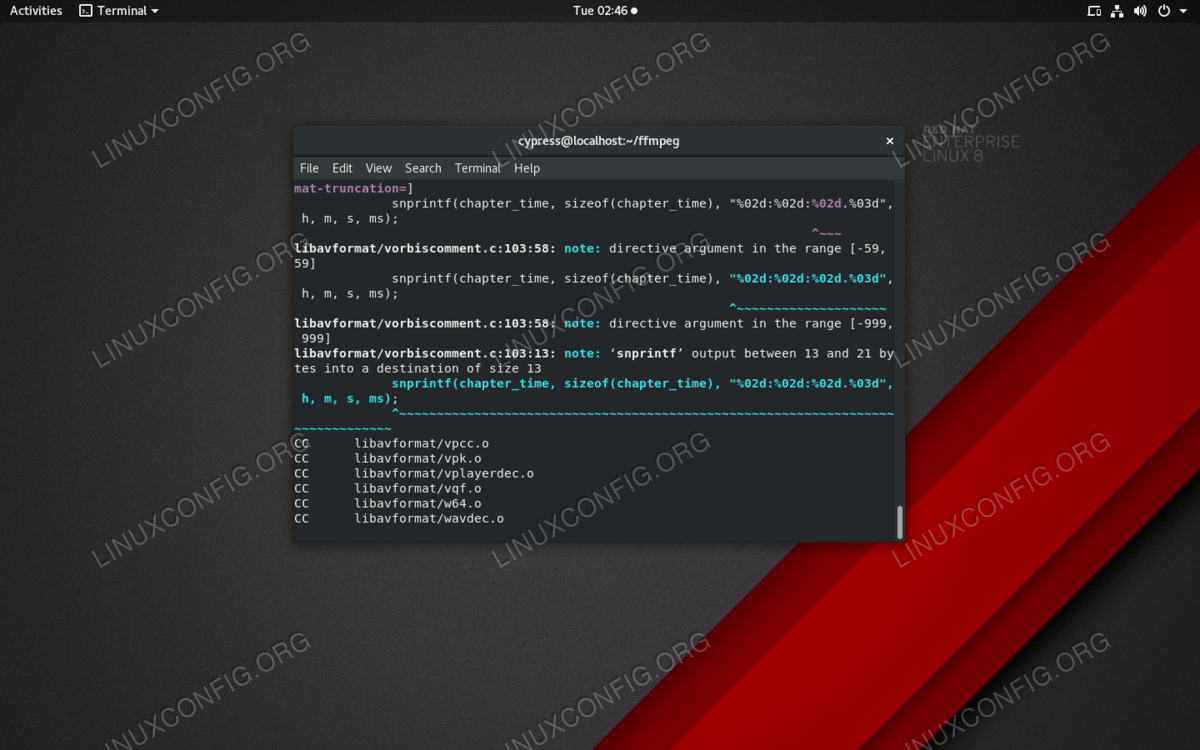

If you hit a problem or have feedback, leave a comment below.Recently it became available to use binary packages for FFmpeg and other related codecs for media content management without need to compile all of them from the sources. Page and learn how to use FFmpeg to convert and your video and audio files. You should now visit the official FFmpeg Documentation We’ve shown you how to install FFmpeg on CentOS 8. ffmpeg -i input.mp3 -c:a libopus output.ogg It can be a name of any supported decoder/encoder or a special value copy that simply copies the input stream.Ĭonvert a video file from mp4 to webm using the libvpx video codec and libvorbis audio codec: ffmpeg -i input.mp4 -c:v libvpx -c:a libvorbis output.webmĬonvert an audio file from mp3 to ogg encoded with the libopus codec. When converting files, use the -c option to specify the codecs. The input file format is auto detected and the output format is guessed from the file extension.Ĭonvert a video file from mp4 to webm: ffmpeg -i input.mp4 output.webmĬonvert an audio file from mp3 to ogg: ffmpeg -i input.mp3 output.ogg When converting audio and video files with ffmpeg you do not have to specify the input and output formats. In this section, we will look at some basic examples on how to use the ffmpeg utility. FFmpeg has been installed on your CentOS machine, and you can start using it. The command will also show the FFmpeg configuration options. ffmpeg version 4.2.2 Copyright (c) 2000-2019 the FFmpeg developers Verify the FFmpeg installation by checking its version: ffmpeg -versionĪt the time of writing this article, the current version of FFmpeg available in the Negativo17 repository is 2.8.15.

Once the repositories are enabled, install FFmpeg: sudo dnf install ffmpeg How to Install and Use FFmpeg on Ubuntu 20.04 sudo dnf install epel-release dnf-utils sudo yum-config-manager -set-enabled PowerTools sudo yum-config-manager -add-repo=


 0 kommentar(er)
0 kommentar(er)
